#Java overview
Explore tagged Tumblr posts
Text
#Java Full Stack Developer Course in Hyderabad#Java Full stack developer Training in Hyderabad#Full stack java course in Hyderabad#Java Course in Hyderabad#Java Training in Hyderabad#Java course fee in Hyderabad#Java overview#java course with real time projects#java training with placements
1 note
·
View note
Text
🧠 Day 7 of Java Mastery: Variables Think of variables as labeled boxes that store values your program can use later. In Java, variables help you manage data efficiently and flexibly. 📦 Read Blog: https://wp.me/paNbWh-4J #JavaMastery #JavaVariables #LearnJava #100DaysOfCode #ProgramBasics
#app development#architecture of java#backend#beginner#datastructures#execution flow#frontend#fullstack#fullstackdeveloper#Java#output#overview#print#sysout
0 notes
Text

How to Learn Java Step by Step: Core Concepts
Java is one of the most popular programming languages used by over 9 million developers worldwide. Learning Java opens up opportunities across many industry verticals. This section provides an overview of Java, reasons to learn it, and the key concepts you'll need to know to get started.
14 notes
·
View notes
Text
The C Programming Language Compliers – A Comprehensive Overview
C is a widespread-purpose, procedural programming language that has had a profound have an impact on on many different contemporary programming languages. Known for its efficiency and energy, C is frequently known as the "mother of all languages" because many languages (like C++, Java, and even Python) have drawn inspiration from it.
C Lanugage Compliers

Developed within the early Seventies via Dennis Ritchie at Bell Labs, C changed into firstly designed to develop the Unix operating gadget. Since then, it has emerge as a foundational language in pc science and is still widely utilized in systems programming, embedded systems, operating systems, and greater.
2. Key Features of C
C is famous due to its simplicity, performance, and portability. Some of its key functions encompass:
Simple and Efficient: The syntax is minimalistic, taking into consideration near-to-hardware manipulation.
Fast Execution: C affords low-degree get admission to to memory, making it perfect for performance-critical programs.
Portable Code: C programs may be compiled and run on diverse hardware structures with minimal adjustments.
Rich Library Support: Although simple, C presents a preferred library for input/output, memory control, and string operations.
Modularity: Code can be written in features, improving readability and reusability.
Extensibility: Developers can without difficulty upload features or features as wanted.
Three. Structure of a C Program
A primary C application commonly consists of the subsequent elements:
Preprocessor directives
Main function (main())
Variable declarations
Statements and expressions
Functions
Here’s an example of a easy C program:
c
Copy
Edit
#include <stdio.H>
int important()
printf("Hello, World!N");
go back zero;
Let’s damage this down:
#include <stdio.H> is a preprocessor directive that tells the compiler to include the Standard Input Output header file.
Go back zero; ends this system, returning a status code.
4. Data Types in C
C helps numerous facts sorts, categorised particularly as:
Basic kinds: int, char, glide, double
Derived sorts: Arrays, Pointers, Structures
Enumeration types: enum
Void kind: Represents no fee (e.G., for functions that don't go back whatever)
Example:
c
Copy
Edit
int a = 10;
waft b = three.14;
char c = 'A';
five. Control Structures
C supports diverse manipulate structures to permit choice-making and loops:
If-Else:
c
Copy
Edit
if (a > b)
printf("a is more than b");
else
Switch:
c
Copy
Edit
switch (option)
case 1:
printf("Option 1");
smash;
case 2:
printf("Option 2");
break;
default:
printf("Invalid option");
Loops:
For loop:
c
Copy
Edit
printf("%d ", i);
While loop:
c
Copy
Edit
int i = 0;
while (i < five)
printf("%d ", i);
i++;
Do-even as loop:
c
Copy
Edit
int i = zero;
do
printf("%d ", i);
i++;
while (i < 5);
6. Functions
Functions in C permit code reusability and modularity. A function has a return kind, a call, and optionally available parameters.
Example:
c
Copy
Edit
int upload(int x, int y)
go back x + y;
int important()
int end result = upload(3, 4);
printf("Sum = %d", result);
go back zero;
7. Arrays and Strings
Arrays are collections of comparable facts types saved in contiguous memory places.
C
Copy
Edit
int numbers[5] = 1, 2, three, 4, five;
printf("%d", numbers[2]); // prints three
Strings in C are arrays of characters terminated via a null character ('').
C
Copy
Edit
char name[] = "Alice";
printf("Name: %s", name);
8. Pointers
Pointers are variables that save reminiscence addresses. They are powerful but ought to be used with care.
C
Copy
Edit
int a = 10;
int *p = &a; // p factors to the address of a
Pointers are essential for:
Dynamic reminiscence allocation
Function arguments by means of reference
Efficient array and string dealing with
9. Structures
C
Copy
Edit
struct Person
char call[50];
int age;
;
int fundamental()
struct Person p1 = "John", 30;
printf("Name: %s, Age: %d", p1.Call, p1.Age);
go back 0;
10. File Handling
C offers functions to study/write documents using FILE pointers.
C
Copy
Edit
FILE *fp = fopen("information.Txt", "w");
if (fp != NULL)
fprintf(fp, "Hello, File!");
fclose(fp);
11. Memory Management
C permits manual reminiscence allocation the usage of the subsequent functions from stdlib.H:
malloc() – allocate reminiscence
calloc() – allocate and initialize memory
realloc() – resize allotted reminiscence
free() – launch allotted reminiscence
Example:
c
Copy
Edit
int *ptr = (int *)malloc(five * sizeof(int));
if (ptr != NULL)
ptr[0] = 10;
unfastened(ptr);
12. Advantages of C
Control over hardware
Widely used and supported
Foundation for plenty cutting-edge languages
thirteen. Limitations of C
No integrated help for item-oriented programming
No rubbish collection (manual memory control)
No integrated exception managing
Limited fashionable library compared to higher-degree languages
14. Applications of C
Operating Systems: Unix, Linux, Windows kernel components
Embedded Systems: Microcontroller programming
Databases: MySQL is partly written in C
Gaming and Graphics: Due to performance advantages
2 notes
·
View notes
Text
My First Java Program: A Journey into Coding

Starting with Java programming can be an exciting journey, filled with discovery, challenges, and a sense of accomplishment. My experience of writing my first Java program was a significant milestone that opened up a world of possibilities in software development. In this blog, I’ll share my journey through writing my first Java program, along with the concepts I learned and the obstacles I overcame.
The Excitement of Starting
When I first decided to learn Java, I was motivated by its versatility and widespread use in developing applications, from mobile apps to enterprise software. I had heard about the power of Java and how it is a foundational language for many developers. After setting up my Java development environment, which included installing the Java Development Kit (JDK) and choosing an Integrated Development Environment (IDE) like Eclipse, I was ready to dive in.
The anticipation of writing my first program filled me with excitement. I had heard many experienced programmers talk about how exhilarating it felt to see their code come to life, and I was eager to experience that feeling myself.
Setting Up the Development Environment
Before I could write my first program, I needed to ensure my development environment was properly configured. Here’s a brief overview of how I set it up:
1. Installing the JDK: I downloaded the latest version of the Java Development Kit from the Oracle website. This included everything I needed to compile and run Java applications.
2. Choosing an IDE: I chose Eclipse as my IDE because of its robust features and user-friendly interface. After downloading and installing it, I was ready to start coding.
3. Verifying the Installation: I opened the command prompt (or terminal) and typed java -version to confirm that Java was installed correctly. Seeing the version number displayed confirmed that I was on the right track.
Writing My First Java Program
With my development environment set up, I was finally ready to write my first Java program. Following the traditional approach, I decided to create a simple “Hello, World!” program. This classic exercise is often the first step for beginners learning any programming language.
Step 1: Creating a New Java Project
In Eclipse, I created a new Java project:
1. File > New > Java Project.
2. I named the project “HelloWorld” and clicked Finish.
Step 2: Creating a New Java Class
Next, I created a new Java class within the project:
1. Right-click on the src folder in the HelloWorld project.
2. Selected New > Class.
3. I named the class HelloWorld and checked the box to include the public static void main(String[] args) method. This method is the entry point of any Java application.
Step 3: Writing the Code
With the class created, I wrote the code that would print “Hello, World!” to the console:
public class HelloWorld { public static void main(String[] args) { System.out.println(“Hello, World!”); } }
Code Explanation
public class HelloWorld: This line defines a public class named HelloWorld. In Java, every application must have at least one class.
public static void main(String[] args): This line declares the main method, which is the starting point of any Java program. The JVM (Java Virtual Machine) looks for this method when executing the program.
System.out.println(“Hello, World!”);: This line prints the string “Hello, World!” to the console. The System.out object is used to output data to the console, and println is a method that prints the text followed by a newline.
Step 4: Running the Program
After writing the code, it was time to run my program and see the result:
1. I right-clicked on the HelloWorld.java file in the Project Explorer.
2. Selected Run As > Java Application.
To my delight, the console displayed the message “Hello, World!” It was a simple program, but seeing the output felt like a monumental achievement. I had successfully written and executed my first Java program!
Learning from the Experience
The process of writing my first Java program taught me several important lessons:
Understanding Java Syntax
Java has a specific syntax that must be followed. This includes rules about naming conventions, the use of semicolons to end statements, and the structure of classes and methods. Understanding these rules is essential for writing valid Java code.
The Importance of the Main Method
The main method is crucial in Java applications. It serves as the entry point, and every program must have it to be executed. Learning this concept helped me appreciate how Java applications are structured.
The Power of Output Statements
Using System.out.println() was my first experience with output statements. It highlighted the importance of feedback in programming. Being able to print messages to the console is invaluable for debugging and understanding program flow.
Overcoming Challenges
While writing my first Java program was largely straightforward, I faced some challenges along the way:
Syntax Errors
Initially, I encountered syntax errors due to missing semicolons or misnamed classes. Each error message provided insight into what I needed to correct. This experience emphasized the importance of careful coding and attention to detail.
Understanding the IDE
Familiarizing myself with Eclipse took some time. I had to learn how to navigate the interface, manage projects, and use features like code suggestions and debugging tools. As I continued coding, I became more comfortable with the IDE.
Next Steps in My Java Journey
Completing my first Java program was just the beginning. With a foundational understanding of Java syntax and structure, I was excited to explore more advanced concepts. Here are the next steps I took in my learning journey:
Exploring Java Basics
I delved deeper into Java basics, including:
Data Types: Understanding primitive and reference data types.
Variables: Learning how to declare and use variables effectively.
Operators: Exploring arithmetic, relational, and logical operators.
Control Flow Statements: Mastering if-else, switch, and loop constructs.
Learning Object-Oriented Programming (OOP)
Java is an object-oriented programming language, and I knew I had to understand OOP principles. I focused on concepts such as:
Classes and Objects: Learning how to create and manipulate objects.
Inheritance: Understanding how classes can inherit properties from other classes.
Encapsulation: Learning how to hide data within classes.
Polymorphism: Exploring method overloading and overriding.
Building Projects
I started working on small projects to apply my knowledge. Simple applications, like a calculator or a text-based game, helped solidify my understanding of Java concepts.
Conclusion
Writing my first Java program was a thrilling experience that marked the beginning of my journey as a programmer. The excitement of seeing my code come to life, coupled with the knowledge I gained, fueled my desire to continue learning and growing in the field of software development.
Java has proven to be a powerful language with endless possibilities, and I am eager to explore its depths further. With each program I write, I feel more confident in my coding abilities and more inspired to tackle new challenges.
If you’re starting your Java journey, embrace the process, celebrate your successes, and don’t shy away from challenges. Each step you take brings you closer to becoming a proficient Java developer.
Happy coding!
2 notes
·
View notes
Text
Intel VTune Profiler For Data Parallel Python Applications
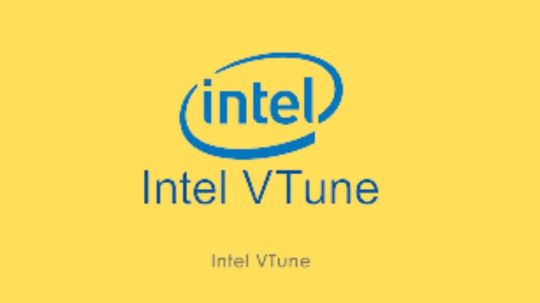
Intel VTune Profiler tutorial
This brief tutorial will show you how to use Intel VTune Profiler to profile the performance of a Python application using the NumPy and Numba example applications.
Analysing Performance in Applications and Systems
For HPC, cloud, IoT, media, storage, and other applications, Intel VTune Profiler optimises system performance, application performance, and system configuration.
Optimise the performance of the entire application not just the accelerated part using the CPU, GPU, and FPGA.
Profile SYCL, C, C++, C#, Fortran, OpenCL code, Python, Google Go, Java,.NET, Assembly, or any combination of languages can be multilingual.
Application or System: Obtain detailed results mapped to source code or coarse-grained system data for a longer time period.
Power: Maximise efficiency without resorting to thermal or power-related throttling.
VTune platform profiler
It has following Features.
Optimisation of Algorithms
Find your code’s “hot spots,” or the sections that take the longest.
Use Flame Graph to see hot code routes and the amount of time spent in each function and with its callees.
Bottlenecks in Microarchitecture and Memory
Use microarchitecture exploration analysis to pinpoint the major hardware problems affecting your application’s performance.
Identify memory-access-related concerns, such as cache misses and difficulty with high bandwidth.
Inductors and XPUs
Improve data transfers and GPU offload schema for SYCL, OpenCL, Microsoft DirectX, or OpenMP offload code. Determine which GPU kernels take the longest to optimise further.
Examine GPU-bound programs for inefficient kernel algorithms or microarchitectural restrictions that may be causing performance problems.
Examine FPGA utilisation and the interactions between CPU and FPGA.
Technical summary: Determine the most time-consuming operations that are executing on the neural processing unit (NPU) and learn how much data is exchanged between the NPU and DDR memory.
In parallelism
Check the threading efficiency of the code. Determine which threading problems are affecting performance.
Examine compute-intensive or throughput HPC programs to determine how well they utilise memory, vectorisation, and the CPU.
Interface and Platform
Find the points in I/O-intensive applications where performance is stalled. Examine the hardware’s ability to handle I/O traffic produced by integrated accelerators or external PCIe devices.
Use System Overview to get a detailed overview of short-term workloads.
Multiple Nodes
Describe the performance characteristics of workloads involving OpenMP and large-scale message passing interfaces (MPI).
Determine any scalability problems and receive suggestions for a thorough investigation.
Intel VTune Profiler
To improve Python performance while using Intel systems, install and utilise the Intel Distribution for Python and Data Parallel Extensions for Python with your applications.
Configure your Python-using VTune Profiler setup.
To find performance issues and areas for improvement, profile three distinct Python application implementations. The pairwise distance calculation algorithm commonly used in machine learning and data analytics will be demonstrated in this article using the NumPy example.
The following packages are used by the three distinct implementations.
Numpy Optimised for Intel
NumPy’s Data Parallel Extension
Extensions for Numba on GPU with Data Parallelism
Python’s NumPy and Data Parallel Extension
By providing optimised heterogeneous computing, Intel Distribution for Python and Intel Data Parallel Extension for Python offer a fantastic and straightforward approach to develop high-performance machine learning (ML) and scientific applications.
Added to the Python Intel Distribution is:
Scalability on PCs, powerful servers, and laptops utilising every CPU core available.
Assistance with the most recent Intel CPU instruction sets.
Accelerating core numerical and machine learning packages with libraries such as the Intel oneAPI Math Kernel Library (oneMKL) and Intel oneAPI Data Analytics Library (oneDAL) allows for near-native performance.
Tools for optimising Python code into instructions with more productivity.
Important Python bindings to help your Python project integrate Intel native tools more easily.
Three core packages make up the Data Parallel Extensions for Python:
The NumPy Data Parallel Extensions (dpnp)
Data Parallel Extensions for Numba, aka numba_dpex
Tensor data structure support, device selection, data allocation on devices, and user-defined data parallel extensions for Python are all provided by the dpctl (Data Parallel Control library).
It is best to obtain insights with comprehensive source code level analysis into compute and memory bottlenecks in order to promptly identify and resolve unanticipated performance difficulties in Machine Learning (ML), Artificial Intelligence ( AI), and other scientific workloads. This may be done with Python-based ML and AI programs as well as C/C++ code using Intel VTune Profiler. The methods for profiling these kinds of Python apps are the main topic of this paper.
Using highly optimised Intel Optimised Numpy and Data Parallel Extension for Python libraries, developers can replace the source lines causing performance loss with the help of Intel VTune Profiler, a sophisticated tool.
Setting up and Installing
1. Install Intel Distribution for Python
2. Create a Python Virtual Environment
python -m venv pyenv
pyenv\Scripts\activate
3. Install Python packages
pip install numpy
pip install dpnp
pip install numba
pip install numba-dpex
pip install pyitt
Make Use of Reference Configuration
The hardware and software components used for the reference example code we use are:
Software Components:
dpnp 0.14.0+189.gfcddad2474
mkl-fft 1.3.8
mkl-random 1.2.4
mkl-service 2.4.0
mkl-umath 0.1.1
numba 0.59.0
numba-dpex 0.21.4
numpy 1.26.4
pyitt 1.1.0
Operating System:
Linux, Ubuntu 22.04.3 LTS
CPU:
Intel Xeon Platinum 8480+
GPU:
Intel Data Center GPU Max 1550
The Example Application for NumPy
Intel will demonstrate how to use Intel VTune Profiler and its Intel Instrumentation and Tracing Technology (ITT) API to optimise a NumPy application step-by-step. The pairwise distance application, a well-liked approach in fields including biology, high performance computing (HPC), machine learning, and geographic data analytics, will be used in this article.
Summary
The three stages of optimisation that we will discuss in this post are summarised as follows:
Step 1: Examining the Intel Optimised Numpy Pairwise Distance Implementation: Here, we’ll attempt to comprehend the obstacles affecting the NumPy implementation’s performance.
Step 2: Profiling Data Parallel Extension for Pairwise Distance NumPy Implementation: We intend to examine the implementation and see whether there is a performance disparity.
Step 3: Profiling Data Parallel Extension for Pairwise Distance Implementation on Numba GPU: Analysing the numba-dpex implementation’s GPU performance
Boost Your Python NumPy Application
Intel has shown how to quickly discover compute and memory bottlenecks in a Python application using Intel VTune Profiler.
Intel VTune Profiler aids in identifying bottlenecks’ root causes and strategies for enhancing application performance.
It can assist in mapping the main bottleneck jobs to the source code/assembly level and displaying the related CPU/GPU time.
Even more comprehensive, developer-friendly profiling results can be obtained by using the Instrumentation and Tracing API (ITT APIs).
Read more on govindhtech.com
#Intel#IntelVTuneProfiler#Python#CPU#GPU#FPGA#Intelsystems#machinelearning#oneMKL#news#technews#technology#technologynews#technologytrends#govindhtech
2 notes
·
View notes
Text
It's the one year birthday of my Single Player world!
It's all the first java world I've had and the one year of me having java edition so I'm very happy today. Due to still being in school, and other personal issues, I was only able to play for 425 in-game days but I still got a lot done I think. Incoming Minecraft screenshot pile and ramblings under the cut :].
My first picture and (around) my world spawn. I literally didn't have a minecraft skin at this point due to having bought and downloaded the game at 3 am the night before:

Then theres a picute of the mountain from one of the first sunsets that may or may not be my current computer background. fun fact: this mountain is currently being hollowed out for an unknow project. literally started as me needing coal and now im like a third of the way down this thing):

Next is a bunch of current pictures of the world and builds :D
My house and storage building:

A few different different pictures of the village that i've been building for like 6 months (most of this time I was inactive on the world though):



and a picture of some of my starter farms from the top of my house:

And Finally, an overview-ish shot of a lot of the base :] I'm so happy with my little area no matter how unfinished it is!

Now there are a few different areas that I didn't feel right adding to this post (like more farms, the cave systems that look really cool, and my techno memorial for a few examples) so this isn't everything that exists on the world but here is most of it. I'm so attached to this world and enjoy what i've created on it. I'll stop rambling now, if not I could go on forever :].
#my worlds#ramblings#i've been writing this post for 45 minutes#pulling up minecraft screenshots my worst nightmare#i also just have so many items and ores in this world#along with 10 stacks of blaze rods#i like mining and farming things lmao#:]
10 notes
·
View notes
Text
Navigating Automated Testing with Selenium: A Comprehensive Overview
Introduction: In the dynamic landscape of software development, ensuring the reliability and performance of web applications is imperative. Enter Selenium, a powerhouse in the realm of automated testing, offering a suite of tools and libraries to streamline the testing process. In this article, we'll delve into the intricacies of Selenium, examining its features, advantages, and why it's a top choice for automated testing.
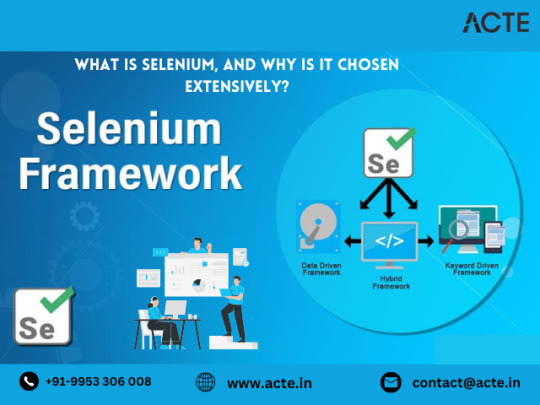
Exploring Selenium's Capabilities: Selenium serves as an open-source automation testing framework primarily designed for web applications. It equips testers with the ability to automate browser interactions, mimic user actions, and validate application behavior across different browsers and platforms.
Key Factors Driving Selenium's Adoption:
Seamless Cross-Browser Compatibility: Selenium's remarkable capability to conduct tests across various web browsers ensures uniform functionality and user experience across diverse platforms, a crucial aspect in today's interconnected digital world.
Embracing Open-Source Accessibility: A significant advantage of Selenium lies in its open-source nature, eliminating licensing barriers and making it accessible to organizations of all sizes. This democratization of automated testing promotes innovation and collaboration within the software development community.
Versatility in Programming Languages: Selenium offers support for multiple programming languages, including Java, Python, C#, Ruby, and JavaScript. This flexibility empowers testers to craft test scripts in their preferred language, fostering productivity and adaptability across diverse teams.
Flexibility and Scalability: One of Selenium's standout features is its flexibility and extensibility, allowing testers to tailor its functionality to suit specific testing needs. Whether integrating with existing frameworks or crafting custom test scenarios, Selenium adapts seamlessly to diverse testing requirements.
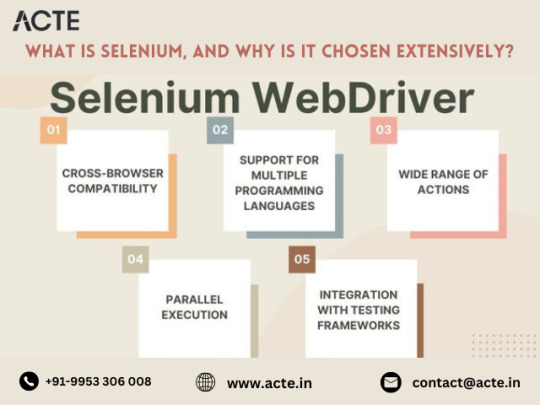
Integration into CI Pipelines: Selenium seamlessly integrates into Continuous Integration (CI) pipelines, automating testing processes and facilitating early bug detection. By embedding Selenium tests within CI workflows, organizations can enhance the efficiency and reliability of their software delivery pipelines.
Thriving Community Support: Selenium boasts a vibrant community of developers, testers, and enthusiasts, actively contributing to its development and evolution. This robust support network provides invaluable resources, documentation, and forums, fostering collaboration and knowledge sharing among users.
Comprehensive Testing Capabilities: Selenium offers a comprehensive suite of testing capabilities, encompassing functional testing, regression testing, performance testing, and compatibility testing. Its rich feature set enables testers to address a wide spectrum of testing scenarios effectively, ensuring the quality and reliability of web applications.
Platform Independence: Selenium's platform-independent nature enables it to run seamlessly across various operating systems, enhancing test portability and scalability. This versatility ensures consistent test execution across diverse environments, bolstering confidence in testing outcomes.
Conclusion: In conclusion, Selenium emerges as a stalwart in the realm of automated testing, driven by its cross-browser compatibility, open-source accessibility, language support, flexibility, integration capabilities, community support, comprehensive testing features, and platform independence. Whether you're a seasoned tester or a budding developer, mastering Selenium empowers you to navigate the complexities of automated testing with confidence and efficiency. As organizations strive for excellence in software quality and reliability, Selenium remains an indispensable tool in their arsenal, facilitating the delivery of robust and resilient web applications in today's digital landscape.
3 notes
·
View notes
Text
Fun with Flutter & Kotlin: A Beginner's Guide
Embark on the dynamic journey of cross-platform app development with the seamless integration of Flutter and Kotlin. This guide unveils key aspects for beginners, ensuring a smooth introduction to creating your first Flutter + Kotlin app.
Introduction
Discover the perfect synergy between Flutter, Google's UI toolkit, and Kotlin, a modern programming language, setting the stage for efficient cross-platform development.
Understanding Flutter
What is Flutter?: A Dart-powered framework simplifying cross-platform development.
Key Features: Real-time updates with Hot Reload and a rich widget library for intuitive UI development.
Setting Up Flutter: A user-friendly guide for installing Flutter SDK and configuring the development environment.
Dive into Kotlin
Introduction: Exploring Kotlin's origins, its role in mobile development, and interoperability with Java.
Setting Up Kotlin for Flutter: Seamless integration guidance for a harmonious development experience.
Building Your First Flutter + Kotlin App
Project Structure Overview: Breakdown of components and files within a Flutter + Kotlin project.
Creating UI with Flutter: Leveraging the widget system for visually appealing interfaces.
Adding Functionality with Kotlin: Integrating Kotlin code seamlessly for enhanced functionality.
Navigating Through Flutter and Kotlin
Navigation Basics: Demystifying navigation within a Flutter app.
Kotlin's Role in Navigation: Enhancing navigation functionalities with Kotlin code.
Debugging and Testing
Debugging Techniques in Flutter: Navigating common challenges with Flutter DevTools.
Testing Strategies with Kotlin: Effective unit testing guidance in Kotlin.
Optimization and Performance
Flutter Performance Tips: Managing widget rebuilds and optimizing state management.
Kotlin's Performance Contribution: Enhancing app performance through efficient coding and memory management.
Advanced Concepts
State Management in Flutter: Insights into advanced options for efficient state management.
Advanced Kotlin Features: Exploration of Kotlin's advanced features, including coroutines and concurrency.
Deployment and Publishing
Preparing Your App: Steps for building and securing an app for deployment.
Publishing on App Stores: Navigating submission processes for Google Play and App Store.
Troubleshooting and Common Issues
Flutter Troubleshooting: Strategies for addressing common issues and handling errors.
Kotlin-Specific Challenges: Identifying and overcoming challenges specific to Kotlin in Flutter projects.
Community and Resources
Joining Flutter Communities: Encouragement to connect through online forums and groups.
Kotlin Resources for Beginners: A curated list of tutorials and documentation for Kotlin learners.
This is the short description for flutter and kotlin. Check out the full descriptive blog for flutter vs Kotlin.
Conclusion
Summarizing key learnings, this guide encourages continued exploration of Flutter and Kotlin's potential in cross-platform app development. If you are a business owner and want your app ready but you are still not sure about which platform you should go for either flutter or kotlin. Here at Eitbiz you will find the best experts who will guide you to the best platform according to your business or service. Check out how we create and help businesses with our flutter app development and kotlin app development.
2 notes
·
View notes
Text
Cross-Platform App Development In Dubai - An Insightful Guide To Follow
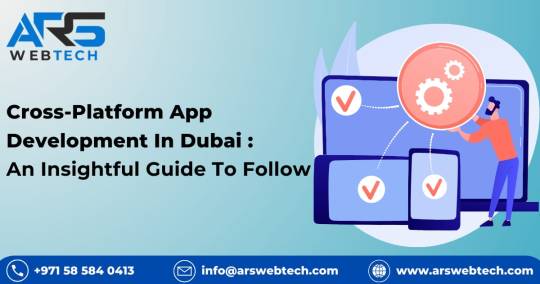
In the heart of the United Arab Emirates, the dynamic world of mobile app development is evolving rapidly, and Dubai is at its forefront. This guide delves into the world of cross-platform app development, highlighting its essentials and showcasing leading mobile app development firms in the UAE, like ARS Webtech.
An Insightful Overview About Cross-Platform App Development
Cross-platform app development involves creating mobile applications that run on multiple platforms using a single codebase. This approach contrasts with traditional native app development, which requires writing separate code for each platform, such as Java or Kotlin for Android and Swift or Objective-C for iOS.
Benefits of Cross-Platform App Development By Mobile App Development Companies UAE
Code Reusability: Developers can write and manage code that works across various platforms, reducing development time and effort.
Cost and Time Efficiency: Faster and more economical than developing individual native apps, it simplifies the entire development cycle.
Wider Market Reach: A single app can target different platforms, expanding market reach.
Consistent User Experience: Cross-platform frameworks support maintaining a consistent experience across platforms.
Faster Deployment and Updates: Facilitates simultaneous feature release across all platforms.
Popular Cross-Platform Development Frameworks
Flutter: Known for creating visually appealing apps, it's a strong choice for businesses in Dubai.
React Native: Supported by Facebook, it allows developers to build mobile apps using React and JavaScript, known for its flexibility and seamless integration.
Best Practices In Cross-Platform App Development
Prioritize User Experience: Ensuring apps function flawlessly with an intuitive interface is crucial.
Security Considerations: Especially important in sectors like healthcare and e-commerce, robust security measures are essential.
Scalability: The app should accommodate increased user traffic and additional features as the business grows.
Regular Updates and Maintenance: Ensuring the app remains compatible with the latest operating systems and user expectations.
Integration of Emerging Technologies: Incorporating AI, IoT, 5G connectivity, and machine learning enhances user experiences and contributes to Dubai's smart city initiatives.
Blockchain for Increased Security: Integrating blockchain technologies can add an extra layer of security, particularly in sensitive industries.
Conclusion
Cross-platform app development is a strategic choice for businesses in Dubai looking to maximize their digital presence. Companies like ARS Webtech are at the forefront of this movement, driving innovation and excellence in the mobile app development scene.
FAQs
1. Which frameworks are commonly used for cross-platform app development in Dubai?
Flutter and React Native are two prominent frameworks. Flutter is known for its visually stunning apps, while React Native offers flexibility and seamless integration.
2. How do mobile app development companies in Dubai prioritize user experience in cross-platform apps?
User experience is a top priority, ensuring consistent and delightful interfaces across devices.
3. How to choose between Flutter and React Native?
The choice depends on specific project requirements, design preferences, development speed, and existing tech stacks.
For further guidance or to start your cross-platform app development journey, contact ARS Webtech at +971585840413.
#ios app development#mobile app company#mobile app developer company#android#digital marketing#mobile app#digital marketing agency#digital marketing company#digital marketing strategy#digital marketing services
2 notes
·
View notes
Text
Disclosing Selenium Expertise: Handling the Web Automation Landscape
Introduction: Unraveling Selenium's Potential
Selenium, a versatile open-source framework, takes center stage in the realm of automating web applications. Tailored for testers and developers, it arms them with essential tools and libraries, streamlining web testing across diverse platforms. Delving into Selenium's capabilities is made even more impactful through Selenium Training in Pune. This training empowers individuals with the skills and knowledge to unlock the full potential of Selenium, enabling them to adeptly tackle web automation challenges and contribute significantly to their fields.

Understanding the Dynamics of Selenium Automation Testing: A Swift Overview
1. Purpose of Selenium: Elevating the Landscape of Web Application Testing
At its essence, Selenium stands as an automation powerhouse for testing web applications. Testers leverage its capabilities to script interactions in languages like Java or Python, replicating user actions and engagements with web elements.
2. Key Features: Navigating the Strengths of Selenium
Cross-Browser Compatibility: Seamlessly supporting browsers such as Chrome, Firefox, Safari, and Edge, ensuring consistent behavior across diverse platforms.
Programming Language Support: Accommodating Java, Python, C#, Ruby, providing versatility for testers and developers.
Parallel Execution: Unlocking the potential for concurrent test runs, amplifying overall testing efficiency.
Integration with Frameworks: Seamlessly integrating with renowned frameworks like TestNG and JUnit, delivering advanced test management capabilities.

3. Components of Selenium: Unveiling the Toolkit's Arsenal
Selenium IDE: A browser extension facilitating the recording and playback of interactions, ideal for beginners. To grasp the full potential of Selenium and master the art of web automation, consider enrolling in the Top Selenium Online Training.
Selenium WebDriver: Empowering direct interaction with browsers using various programming languages.
Selenium Grid: Facilitating parallel test execution across machines and browsers, optimizing testing resources.
4. How Selenium Operates: Behind the Scenes Mastery
Selenium operates through commands, interacting with web elements. Test scripts, crafted in a programming language, execute actions like button clicks and text entries. The WebDriver acts as a vital bridge, connecting these scripts with the browser, breathing life into automation.
In the domain of web application testing, Selenium emerges as a game-changer, offering a user-friendly framework to craft robust automated tests. Whether you don the hat of a tester or a developer, Selenium extends the flexibility and cross-browser compatibility necessary to elevate your web application testing endeavors.
In essence, Selenium simplifies the testing landscape, guaranteeing the functionality and quality of web applications through the potent force of automation. As you embark on your Selenium journey, embrace the efficiency and effectiveness it brings to the dynamic world of web application testing.
2 notes
·
View notes
Text
Mastering Java A Comprehensive Online Training Experience
Introduction:
In the fast-paced realm of software development, Java stands as a cornerstone programming language, powering applications across diverse domains. To harness the full potential of Java, our online training program offers an immersive and comprehensive learning experience. Whether you're a novice eager to embark on your coding journey or an experienced developer aiming to refine your Java skills, our course is meticulously designed to cater to all skill levels.
Section 1: The Importance of Java in Today's Tech Landscape
Java's robustness, portability, and versatility make it a preferred choice for building scalable and secure applications. With a vast community and an extensive ecosystem of libraries and frameworks, Java continues to be a driving force in the software development industry. Our Java online training program recognizes the significance of this programming language and aims to empower individuals with the skills needed to navigate the intricacies of Java development confidently.
Section 2: Curriculum Overview
Our Java online training curriculum is structured to provide a comprehensive understanding of the language, covering both fundamental and advanced concepts. The course begins with an introduction to Java basics, including variables, data types, and control structures. As participants progress, they delve into more complex topics such as object-oriented programming, multithreading, and exception handling.
The curriculum is enriched with real-world examples and hands-on projects to ensure practical application of theoretical knowledge. Participants will gain a deep understanding of Java's syntax, best practices, and design principles, setting the stage for proficient and efficient coding practices.
Section 3: Interactive Learning Platform
Learning Java is not just about reading textbooks; it's about hands-on experience and practical application. Our online training platform is designed to provide an interactive and dynamic learning environment. Participants have access to a variety of resources, including video lectures, coding exercises, quizzes, and collaborative projects. The platform fosters a sense of community, allowing participants to engage with instructors and fellow learners, enhancing the overall learning experience.

Section 4: Industry-Relevant Projects
To bridge the gap between theoretical knowledge and real-world application, our Java online training program includes industry-relevant projects. These projects are designed to simulate actual development scenarios, giving participants the opportunity to apply their skills in a practical setting. Working on projects enhances problem-solving abilities, promotes creativity, and prepares participants for the challenges they may encounter in their professional careers.
Section 5: Expert Guidance
Our team of experienced instructors comprises industry professionals with extensive Java expertise. Participants benefit from their wealth of knowledge, receiving guidance on best practices, industry trends, and valuable insights. The interactive nature of the online training program allows for direct communication with instructors, ensuring that participants can seek clarification, ask questions, and receive personalized feedback.
Section 6: Flexibility and Accessibility
Recognizing the diverse schedules of our participants, our Java online training program is designed to be flexible and accessible. Whether you are a full-time professional, a student, or someone with other commitments, our asynchronous learning model allows you to progress through the course at your own pace. Additionally, the course materials are accessible from anywhere with an internet connection, providing the convenience of learning from the comfort of your own space.
youtube
Section 7: Certification and Career Support
Upon successful completion of the Java online training program, participants receive a certification that validates their skills and knowledge. This certification is a valuable asset for both entry-level developers and experienced professionals seeking career advancement. In addition to the certification, our program offers career support services, including resume building, interview preparation, and job placement assistance, empowering participants to make a seamless transition into the workforce or advance within their current roles.
Conclusion:
Mastering Java is a journey that opens doors to a world of opportunities in software development. Our Java online training program is crafted with precision, offering a holistic and engaging learning experience. Whether you are starting from scratch or looking to enhance your Java skills, our program equips you with the knowledge, practical experience, and industry insights needed to thrive in the dynamic landscape of java full stack developer. Join us on this transformative learning journey and unlock your full potential in the world of Java programming.
#JavaTraining#JavaProgramming#CodeLearning#JavaDevelopment#ProgrammingEducation#JavaCertification#TechTraining#Youtube
2 notes
·
View notes
Text
Overview of My Experience With my Java Project
I have done my course on Java this semester, and at the end we turn in a project we make that is of our choosing. I made a shopping helper application that tracks spending habits and how your recent shopping trips went. It's useful for keeping track of inflation too hehe.
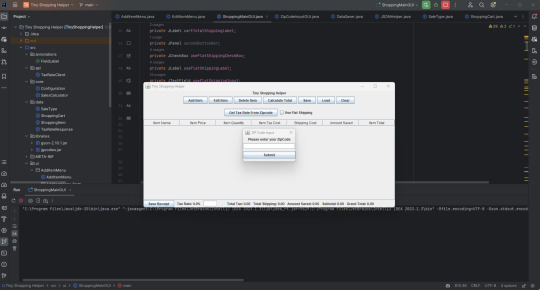
I used an API to fetch the local area tax rate based on US ZIP codes (sorry to everyone outside the US). I also used GSON to write JSON files to save progress, because sometimes we all have to step away right? It also saves the receipt as a .txt or .csv file.
It's in total 3282 lines of code and the sale types was the worst part giving so many errors due to my dumb ass not knowing how to do math, but other than that I honestly just hate UI with a passion, so that wasn't fun.
Overall despite my initial hatred of Java, I think I can safely say while it is annoying, I will probably be okay working with it again. I don't love it or hate it.
Now next semester is when I'll shine. C# should be a breeze, and hopefully I'll learn something new. HTML/CSS should be okay although I'm debating switching it out for .net (don't ask why C# and .net are in 2 different classes, idk either). C++ with Unreal engine will be the scary one for me since I've heard horror stories about C++.
On a small note I hope we use C# 12 and if I do .net I hope it's .net 8
#self improvement#cosmickittytalk#codeblr#java#javaprogramming#javaprojects#college homework#college#Cs major#computer science#computer science major#software development#programming#learning programming
3 notes
·
View notes
Text
Your Roadmap to Java Proficiency: Step-by-Step Learning Guide
Embarking on the journey to master Java, a versatile and widely-used programming language, is not just a venture into coding; it's a profound exploration into the realm of software development. Java is the linchpin of countless applications, from web development and mobile apps to scientific research, gaming, and more. Whether you're stepping into the programming world for the first time or an experienced developer seeking to expand your skill set, understanding the fundamentals of Java is your gateway to the ever-evolving world of technology.
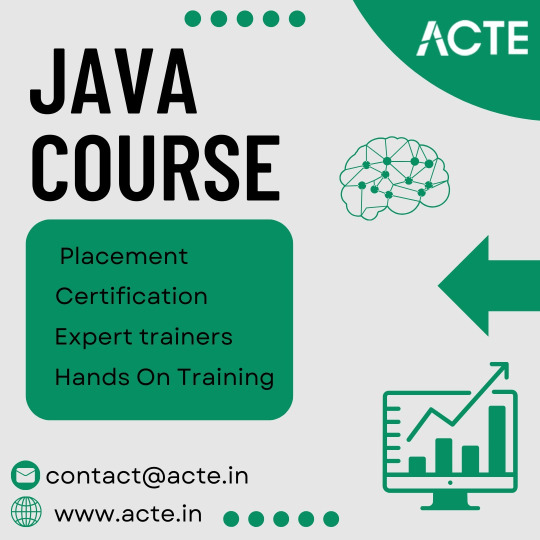
Mastering Java is not only a valuable skill but also an exciting and rewarding journey. By following a structured approach, you can build a strong foundation and gradually advance towards proficiency. In this comprehensive guide, we'll walk you through the essential steps and concepts, ensuring that you gain a comprehensive understanding of Java. From setting up your development environment to building real-world projects, we'll cover every crucial aspect of your Java learning journey.
Are you ready to dive into the world of Java? Let's get started on your path to becoming a proficient Java developer.
Step 1: Setting Up Your Development Environment:
Setup Your Environment To kickstart your Java learning journey, the first chapter delves into setting up your development environment. You'll begin by installing the Java Development Kit (JDK) and an Integrated Development Environment (IDE) like Eclipse or IntelliJ IDEA. These essential tools streamline the coding process, making it more efficient and organized.
Step 2: Grasping the Basics:
Learn the Basics Building a strong foundation is vital, and the second chapter focuses on grasping the basics of Java. You'll start with fundamental concepts such as data types, variables, operators, and control structures like if-else statements and loops. Online tutorials and beginner Java books are excellent resources for this stage, providing you with a solid introduction to the language.
Step 3: Mastering Object-Oriented Programming (OOP):
Object-Oriented Programming (OOP) Java is renowned for its object-oriented nature, and Chapter 3 delves into the core principles of Object-Oriented Programming (OOP). You'll explore classes, objects, inheritance, encapsulation, and polymorphism, all of which are fundamental concepts that underpin Java's architecture.
Step 4: Navigating Data Structures and Algorithms:
Data Structures and Algorithms Understanding data structures and algorithms is crucial for solving real-world problems efficiently. Chapter 4 provides an overview of essential data structures like arrays, lists, and sets, and introduces you to basic algorithms. This knowledge is fundamental for optimizing code and solving complex programming challenges.
Step 5: Exception Handling and Error Tolerance:
Exception Handling Chapter 5 delves into the critical topic of exception handling. You'll learn how to handle exceptions properly, an essential aspect of writing reliable and error-tolerant code. Proper exception handling ensures that your applications can gracefully recover from unexpected issues.
Step 6: Exploring I/O Operations:
I/O Operations Chapter 6 focuses on Input/Output (I/O) operations in Java. You'll explore reading and writing files, as well as interacting with users through the console. I/O operations are essential for creating programs that can handle data efficiently.
Step 7: Embracing Multithreading:
Multithreading Java's support for multithreading is a powerful feature, enabling the creation of concurrent applications. In Chapter 7, you'll grasp the intricacies of thread management and synchronization, essential skills for building responsive and efficient software.
Step 8: Building Projects and Gaining Practical Experience:
Build Projects and Practice Chapter 8 encourages you to apply what you've learned by embarking on practical projects. These projects not only solidify your skills but also serve as valuable additions to your portfolio. Real-world applications of your knowledge help you grow as a developer.
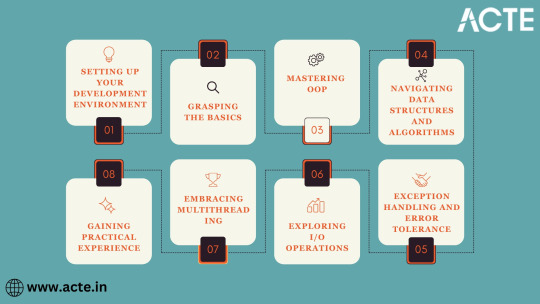
Exploring Java is more than simply a first step towards learning a programming language—it's a calculated investment in your capacity for software creation. Java is a useful tool for both inexperienced and expert developers due to its adaptability and prevalence in many applications. But you need the proper instruction and training if you want to fully utilize its strength and potential.
This is where ACTE Technologies comes into the picture. If you're committed to becoming a proficient Java developer, you should strongly consider enrolling in their comprehensive Java training courses. The wealth of knowledge and practical expertise they offer can significantly expedite your journey toward mastering Java. By choosing ACTE Technologies, you're not just embarking on a learning adventure; you're opening the door to a myriad of career opportunities in the vast landscape of software development and information technology. Your programming future is full of potential, and it all begins with the right education and training. Start your Java learning adventure with ACTE Technologies, and the possibilities are limitless.
3 notes
·
View notes
Text
What is Solr – Comparing Apache Solr vs. Elasticsearch

In the world of search engines and data retrieval systems, Apache Solr and Elasticsearch are two prominent contenders, each with its strengths and unique capabilities. These open-source, distributed search platforms play a crucial role in empowering organizations to harness the power of big data and deliver relevant search results efficiently. In this blog, we will delve into the fundamentals of Solr and Elasticsearch, highlighting their key features and comparing their functionalities. Whether you're a developer, data analyst, or IT professional, understanding the differences between Solr and Elasticsearch will help you make informed decisions to meet your specific search and data management needs.
Overview of Apache Solr
Apache Solr is a search platform built on top of the Apache Lucene library, known for its robust indexing and full-text search capabilities. It is written in Java and designed to handle large-scale search and data retrieval tasks. Solr follows a RESTful API approach, making it easy to integrate with different programming languages and frameworks. It offers a rich set of features, including faceted search, hit highlighting, spell checking, and geospatial search, making it a versatile solution for various use cases.
Overview of Elasticsearch
Elasticsearch, also based on Apache Lucene, is a distributed search engine that stands out for its real-time data indexing and analytics capabilities. It is known for its scalability and speed, making it an ideal choice for applications that require near-instantaneous search results. Elasticsearch provides a simple RESTful API, enabling developers to perform complex searches effortlessly. Moreover, it offers support for data visualization through its integration with Kibana, making it a popular choice for log analysis, application monitoring, and other data-driven use cases.
Comparing Solr and Elasticsearch
Data Handling and Indexing
Both Solr and Elasticsearch are proficient at handling large volumes of data and offer excellent indexing capabilities. Solr uses XML and JSON formats for data indexing, while Elasticsearch relies on JSON, which is generally considered more human-readable and easier to work with. Elasticsearch's dynamic mapping feature allows it to automatically infer data types during indexing, streamlining the process further.
Querying and Searching
Both platforms support complex search queries, but Elasticsearch is often regarded as more developer-friendly due to its clean and straightforward API. Elasticsearch's support for nested queries and aggregations simplifies the process of retrieving and analyzing data. On the other hand, Solr provides a range of query parsers, allowing developers to choose between traditional and advanced syntax options based on their preference and familiarity.
Scalability and Performance
Elasticsearch is designed with scalability in mind from the ground up, making it relatively easier to scale horizontally by adding more nodes to the cluster. It excels in real-time search and analytics scenarios, making it a top choice for applications with dynamic data streams. Solr, while also scalable, may require more effort for horizontal scaling compared to Elasticsearch.
Community and Ecosystem
Both Solr and Elasticsearch boast active and vibrant open-source communities. Solr has been around longer and, therefore, has a more extensive user base and established ecosystem. Elasticsearch, however, has gained significant momentum over the years, supported by the Elastic Stack, which includes Kibana for data visualization and Beats for data shipping.
Document-Based vs. Schema-Free
Solr follows a document-based approach, where data is organized into fields and requires a predefined schema. While this provides better control over data, it may become restrictive when dealing with dynamic or constantly evolving data structures. Elasticsearch, being schema-free, allows for more flexible data handling, making it more suitable for projects with varying data structures.
Conclusion
In summary, Apache Solr and Elasticsearch are both powerful search platforms, each excelling in specific scenarios. Solr's robustness and established ecosystem make it a reliable choice for traditional search applications, while Elasticsearch's real-time capabilities and seamless integration with the Elastic Stack are perfect for modern data-driven projects. Choosing between the two depends on your specific requirements, data complexity, and preferred development style. Regardless of your decision, both Solr and Elasticsearch can supercharge your search and analytics endeavors, bringing efficiency and relevance to your data retrieval processes.
Whether you opt for Solr, Elasticsearch, or a combination of both, the future of search and data exploration remains bright, with technology continually evolving to meet the needs of next-generation applications.
2 notes
·
View notes
Text
Top Career Opportunities After a Machine Learning Course in Chennai
In today’s digital economy, data is more valuable than ever—and those who can analyze, interpret, and act on that data are in high demand. Machine Learning (ML) has emerged as one of the most in-demand skill sets across industries, from healthcare and finance to e-commerce and tech. If you’re considering upskilling or switching careers, enrolling in a Machine Learning Course in Chennai could be the turning point you’re looking for.
This article explores the top career opportunities that open up after completing a machine learning course, especially in a thriving tech hub like Chennai. Whether you're a fresh graduate or a working professional, understanding your job prospects will help you take confident steps in your AI/ML career journey.
Why Chennai Is a Great Place to Start Your ML Career?
Chennai is not just a cultural and educational center—it's also becoming one of India’s leading technology hubs. With major IT companies, fintech firms, and emerging startups setting up operations in the city, the demand for skilled machine learning professionals is on a steady rise.
When you enroll in a Machine Learning Course in Chennai, you benefit from:
Access to industry experts and guest lecturers
Real-world projects sourced from local businesses
Proximity to hiring companies and startup ecosystems
Growing opportunities in sectors like healthcare, banking, automation, and logistics
1. Machine Learning Engineer
Role Overview: Machine Learning Engineers are responsible for designing and implementing algorithms that allow machines to learn from data. They build predictive models, train neural networks, and deploy ML systems into production.
Skills Needed:
Python, R, or Java
Scikit-learn, TensorFlow, PyTorch
Data preprocessing and feature engineering
Model evaluation and tuning
Salary Range (Chennai): ₹6 LPA to ₹20+ LPA
Why It’s Hot: One of the highest-paying roles in the AI domain, this position is the go-to option for those who complete an advanced Machine Learning Course in Chennai.
2. Data Scientist
Role Overview: Data Scientists turn raw data into actionable insights. They use machine learning techniques to predict trends, recommend actions, and optimize business decisions.
Skills Needed:
Statistical modeling
Predictive analytics
Data visualization (Tableau, Power BI, Matplotlib)
SQL and Big Data tools
Salary Range (Chennai): ₹7 LPA to ₹25 LPA
Why It’s Hot: Data Scientists are needed across industries, and Chennai-based companies—from fintech to logistics—are constantly on the lookout for professionals who can use machine learning to solve real-world problems.
3. AI Engineer
Role Overview: AI Engineers focus on designing systems that exhibit human-like intelligence. This may involve natural language processing, image recognition, robotics, and intelligent automation.
Skills Needed:
Deep Learning with Keras or PyTorch
Computer Vision, NLP
Reinforcement Learning
Cloud AI APIs (AWS, Azure, Google Cloud)
Salary Range (Chennai): ₹8 LPA to ₹30 LPA
Why It’s Hot: With Chennai becoming a hub for AI research and innovation, especially in automotive and manufacturing sectors, AI Engineers are seeing increasing demand.
4. Data Analyst (with ML Skills)
Role Overview: Data Analysts use data to identify trends and patterns. When combined with ML skills, they can go a step further—automating insights, predictions, and real-time reporting.
Skills Needed:
Excel, SQL, Python
Regression analysis, clustering
Data cleaning and visualization
Basic machine learning models
Salary Range (Chennai): ₹4 LPA to ₹10 LPA
Why It’s Hot: Many companies in Chennai prefer data analysts who have machine learning knowledge, as they offer deeper analytical capabilities and automation potential.
5. Business Intelligence Developer
Role Overview: BI Developers build tools and dashboards that help businesses make data-driven decisions. With machine learning integration, these tools can become predictive and prescriptive.
Skills Needed:
BI tools like Power BI, Tableau
Data warehousing and ETL
Python or R for ML integration
SQL and API development
Salary Range (Chennai): ₹5 LPA to ₹12 LPA
Why It’s Hot: Chennai’s growing enterprise sector demands insights at speed and scale—exactly what ML-enhanced BI systems provide.
6. Natural Language Processing (NLP) Engineer
Role Overview: NLP Engineers specialize in teaching machines to understand human language. They're involved in building chatbots, sentiment analysis engines, and speech recognition systems.
Skills Needed:
NLTK, spaCy, Transformers (BERT, GPT)
Text preprocessing and annotation
Language modeling and text classification
Salary Range (Chennai): ₹7 LPA to ₹20 LPA
Why It’s Hot: With Tamil-language NLP tools on the rise and local demand for multilingual chatbots, NLP is a growing niche in Chennai’s AI ecosystem.
7. Computer Vision Specialist
Role Overview: Computer Vision Specialists build applications that process and interpret visual data—like facial recognition, autonomous driving, and image-based quality control.
Skills Needed:
OpenCV, TensorFlow, Keras
CNNs and object detection algorithms
Image augmentation and annotation
Deployment on edge devices
Salary Range (Chennai): ₹6 LPA to ₹18 LPA
Why It’s Hot: Chennai is home to automobile giants and manufacturing firms, where vision-based AI is being widely adopted for automation and safety.
8. Machine Learning Researcher / R&D Analyst
Role Overview: If you enjoy academic exploration, you can dive into AI/ML research. Researchers work on creating new algorithms, improving existing models, or contributing to open-source AI.
Skills Needed:
Advanced mathematics and statistics
Research writing and experimentation
Deep learning, reinforcement learning
Proficiency in Python, MATLAB, or Julia
Salary Range (Chennai): ₹8 LPA to ₹30 LPA (can vary based on project and grants)
Why It’s Hot: Chennai-based universities, research labs, and multinational R&D divisions are investing heavily in AI innovations.
9. Automation and Robotics Engineer (with ML Focus)
Role Overview: These engineers build intelligent robotic systems that can automate complex tasks using ML algorithms.
Skills Needed:
Robotics hardware and software
Control systems and sensors
Deep learning and reinforcement learning
ROS (Robot Operating System)
Salary Range (Chennai): ₹6 LPA to ₹15 LPA
Why It’s Hot: With Chennai’s strong presence in automotive manufacturing, smart automation using ML is gaining traction in factories and logistics.
10. Freelance or AI Consultant
Role Overview: Many professionals choose to work as independent consultants or freelancers, helping businesses adopt AI/ML for various use cases.
Skills Needed:
End-to-end ML project management
Business consulting experience
Client communication and reporting
Custom model development
Earning Potential: ₹50,000 to ₹3 lakhs/month (project-based)
Why It’s Hot: Startups and SMEs in Chennai often prefer project-based AI help, making this a flexible and lucrative career path.
Final Thoughts
Chennai’s technology ecosystem is booming—and machine learning is at its heart. Whether you're interested in engineering, analysis, development, or research, a Machine Learning Course in Chennai can unlock career paths with excellent growth potential and attractive salaries.
From ML Engineers to NLP Specialists and Data Scientists, the job market is ripe with opportunities. And with industry demand only expected to grow, now is the perfect time to gain these future-proof skills.
If you're ready to transform your career, look for a course that offers hands-on training, real-world projects, placement support, and mentorship from industry experts—qualities that can fast-track your entry into the world of artificial intelligence.
#Machine Learning Course in Chennai#Data Scientist Course in Chennai#Best Data Science Courses in Chennai#Artificial Intelligence Course in Chennai
0 notes